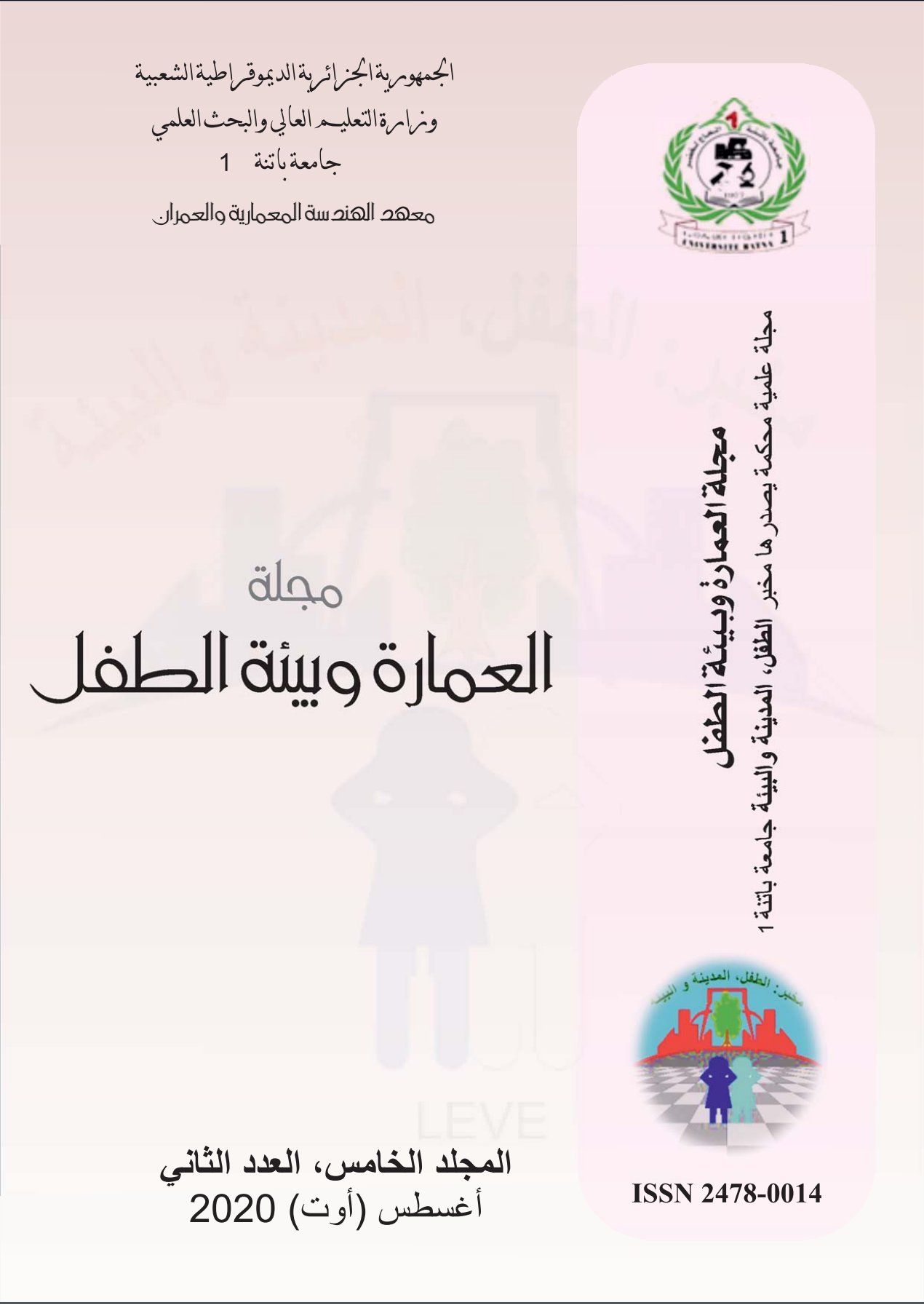Modern residential environment- Social collective housing-Measuring the range of satisfaction between the aspirations of the inhabitants and the plan imposed in light of the approved modifications. Case study: Bousaada City
Keywords:
residential environmen, modifications, the chi-squared test, ; residents' satisfaction, Post Occupancy AssessmentAbstract
Measuring the compatibility of residential models, especially the collective ones, and their
users is a prolific area of research in the field of sociology related to the residential environment
according to the mutual influence between them; this relationship was dominated by harmony and
integration till the emergence of modernity which produced a gap between design thinking and the
actual needs of the inhabitant, this hiatus, was manifested in the deterioration of the appearance of
the residential environment as a result of random changes of the inhabitants as an attempt to re-adapt
the built environment according to their needs. From this point, it was necessary to carry out an
evaluation of the performance of the residential environment; this is by measuring the range of the
residents' satisfaction with their residential environment, especially since it was produced far from
their lifestyle. The problem today is summed up in the prevailing dissatisfaction, which is reflected
in the two phenomena of leaving the home for those who are permitted by circumstances and random
modifications at the level of the internal space of the dwelling. Post Occupancy Assessment is an
effective tool and methodology for identifying and measuring success and failure points for
residential projects and one of the indicators of satisfaction and the modifications adopted by the
residents as proof of the inadequacy of the product being imposed, in this context, satisfaction is
measured from the viewpoint of the modifications taking place as a dependent variable, and those
related to the social dimension as independent variables, Using the chi-squared test for independence
in order to measure the correlation between the dependent variable and the independent variables,
seeking to confirm or deny the controlling variables in the phenomenon under study.

